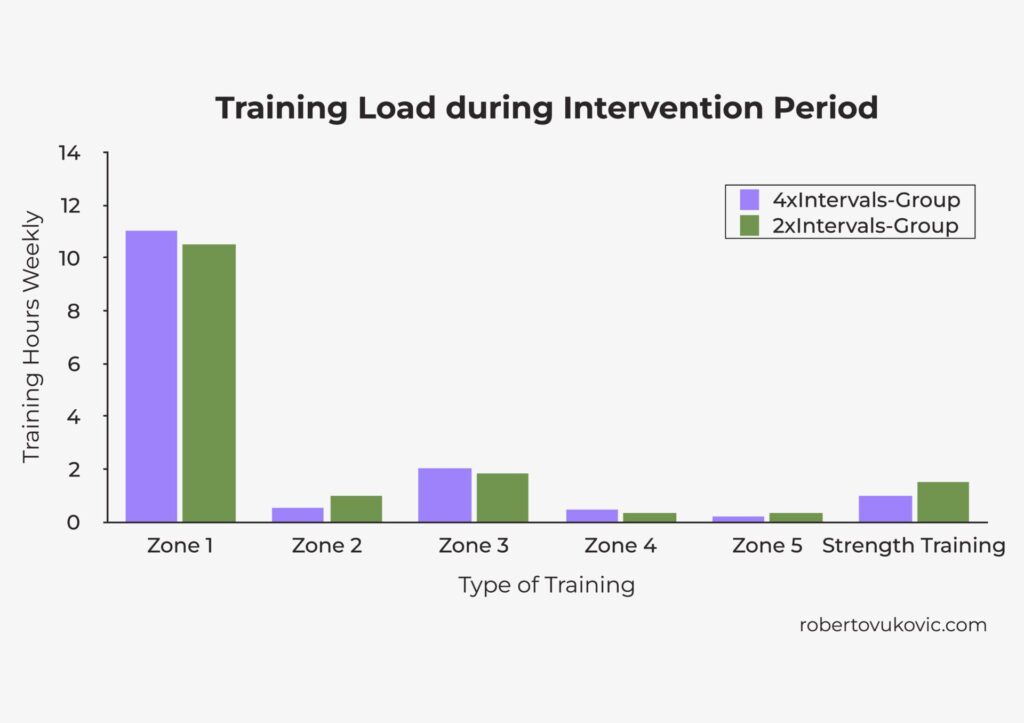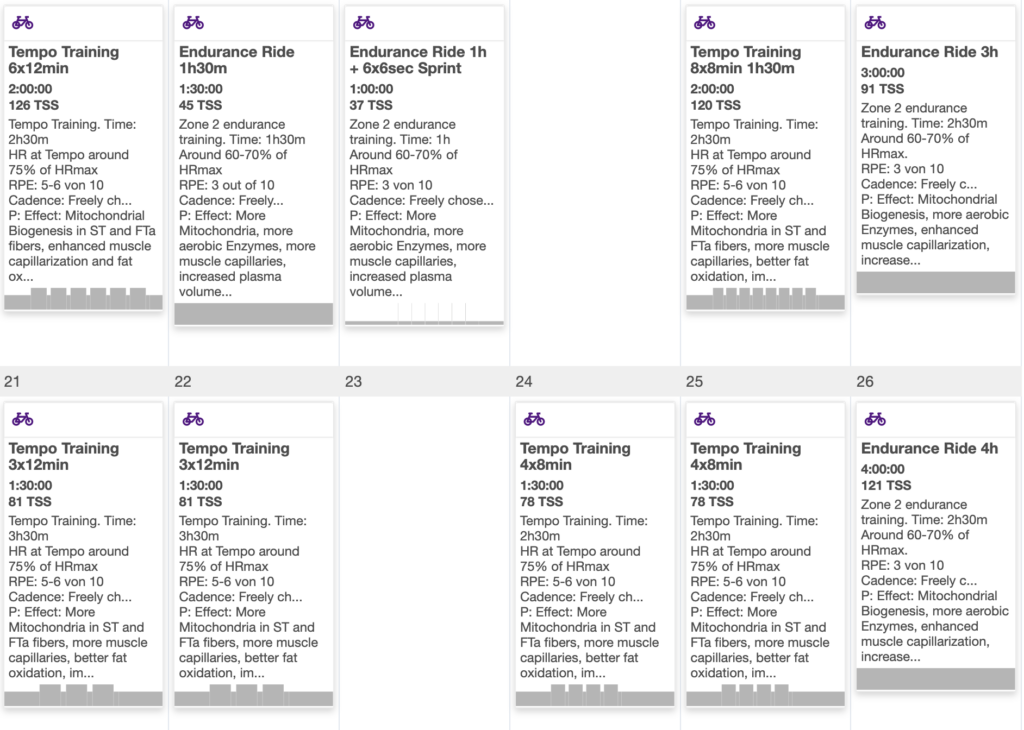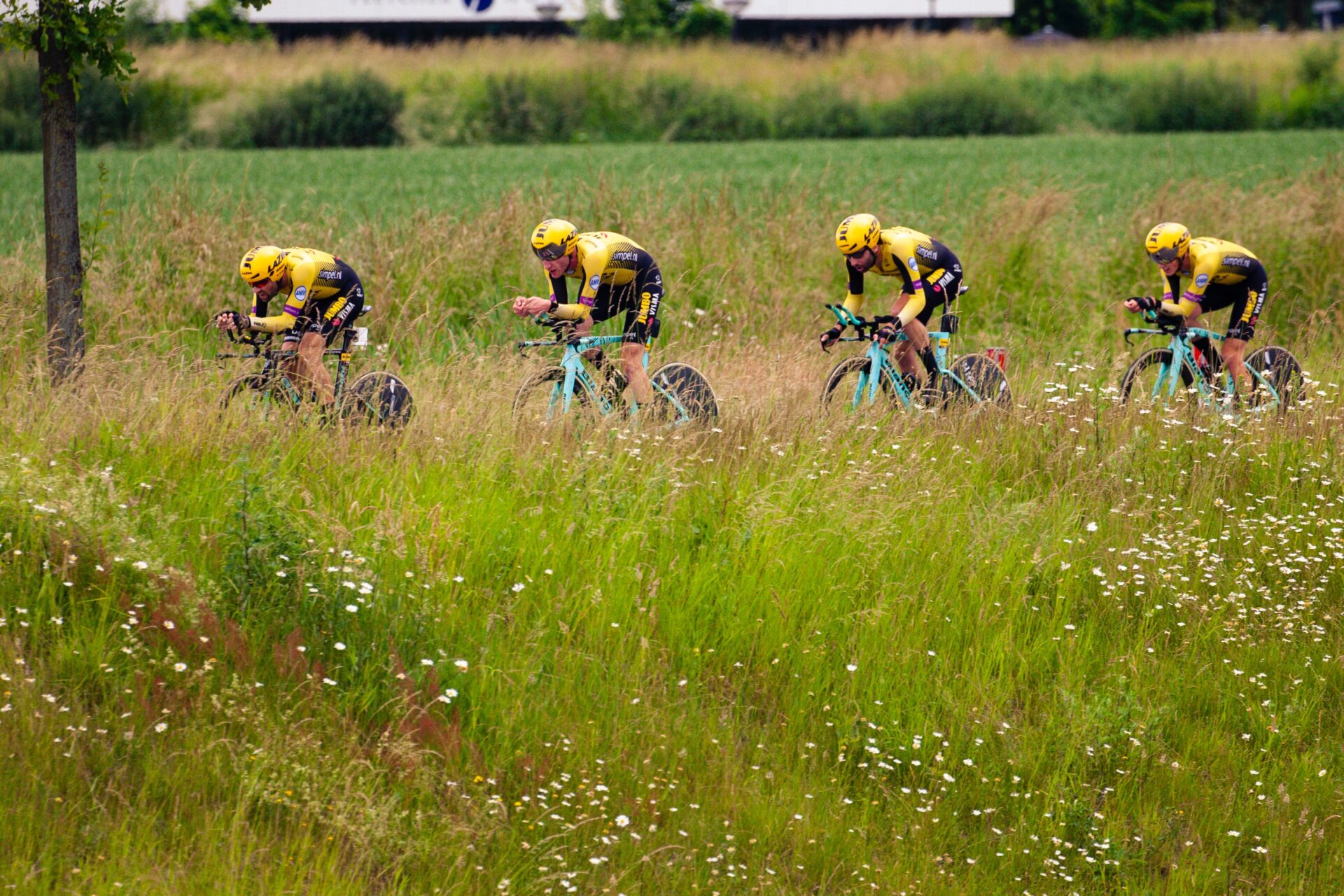Bent Rønnestad received a lot of attention for his 30/15 studies. There were as many haters as there were supporters, though. Yet I think Rønnestad is still one of the groundbreaking researchers of modern sports science. His more remarkable studies, however, somehow remain unknown. Today, I want to talk about his research on training density.
Because with training density two athletes with the same overall training volume can achieve very different results. Training density might explain why your peers and rivals constantly progress and you don’t. Training density might explain how to do your weekly interval training sessions. Training density might explain why you sit on a performance plateau and others don’t. So, maybe get yourself a pen and a paper.
Here’s what you need to know…
The Science of Training Density
Sports science consistently emphasizes the importance of a high training volume. Of course, the best cyclists in the world usually also have the highest training volume. However, what overall training volume neglects as a variable is the concentrated training load for the day.
For example, two athletes can have the same weekly volume with a very different structure. If you take a cyclist who does 5 rides of 2 hours per week and compare that to a cyclist who does 1x 4 hour ride, 1x 3 hour ride, and 3x 1 hour rides, they are both doing 10 hours per week with 5 sessions. Yet, cyclist number 2 has a higher training density with the 3 and 4-hour ride. Now, while both might get better I bet on cyclist number 2.
While this might look obvious to you, Rønnestad and colleagues wanted to know what effect it might have on endurance performance, when training load is concentrated on certain days.
Here’s the study design: They took a group of Elite Cross-Country Skiers and divided them into either 1. a High-Frequency Group (mean VO2max 68ml/min/kg), or 2. a Low-Frequency Group (mean VO2max 71ml/min/kg). The Intervention period lasted 12 weeks and the total weekly training volume was equal. The only difference was the interval session execution. Group 1 (HF) performed 4 short interval sessions, while Group 2 (LF) did the same interval volume on just 2 days, see concentrated load.
Here’s the training intensity distribution across the groups:

Subjects performed the intervals at 85% of max. heart rate. This is 3% lower than the 4x16min intervals in the Seiler study, where subjects did 88% of max heart rate. It’s a subtle difference, but according to the Norwegian Olympic Centre, 88% falls in the severe domain (HIT). The long intervals in this study fall in zone 3 from 82-87% of max heart rate called natural interval training. So, 85% max heart rate might be at or slightly below your threshold.
To give you an example my maxHr is 192 Bpm. Now, 192 x .85 is 163 Bpm for me for the intervals. I ride my threshold intervals at 165-170 Bpm, so we might float slightly below threshold.
Work Hard When it Counts
Let’s get accurate. During the 12-week intervention period, the HF group performed 4 weekly interval sessions of 2x 4x8min and 2x 3x12min. Subjects did two interval sessions on consecutive days with one easy day in between. On the other hand, the LF Group did 2 sessions consisting of 1x 8x8min intervals and 1x 6x12min. Thus, the same interval volume just done differently.
What’s interesting here is that both groups did most of their training at low intensity. So, from an intensity distribution standpoint, both groups performed pyramidal or polarized training. Yet, both methods lead to very different results in training adaptation.
Now, researchers tested the subjects for an 8km Rollerski TT, VO2max test, %VO2max at threshold, and exercise economy. For now, you should know that the LF Group improved in all areas apart from VO2max, while the HF Group stagnated. However, VO2max is not as surprising as these athletes already have a higher VO2max. Hence they might need higher intensity to elicit further improvements in VO2max.
Accordingly, I want to provide you with two simple rules you should watch out for in a training plan or your planning:
- Do the bulk of your training at low intensity, anything 50-65% of your FTP or 60-70% of HRmax. If someone tells you differently ignore it.
- Perform two interval sessions per week of either Threshold or HIT. Remember, go hard when it really matters. A plan has 4 interval sessions for consecutive weeks? Skip it.
Let’s talk about the subjects’ improvements now, and what we can translate into our training.

Learnings From the Science of Interval Training Frequency
While both groups did similar training and intensity, the HF Group didn’t see any improvements. This is a disaster for any serious cyclist. I mean, you invest a lot of hard work and time in your training (the same as the other group) but don’t move forward.
This is a common pitfall many cyclists fall into because they neglect the following…
1. The Lower the Intensity the Higher the Total Work
Read that headline again. See, an important thing the study captures is not only is it not enough to perform 32-36 minutes of sub-threshold work per day for a highly trained athlete, but you can’t catch up with the guys who do double the amount per session, even though you do it four times a week.
To induce an effective training stimulus, highly trained athletes seem to need 64-72 minutes of concentrated zone 3 work done twice a week.
This aligns with all the studies Seiler and colleagues did, comparing 4×4 minutes to 4×8 minutes and 4×16 minute intervals. Because there’s an interactive effect of work intensity and total work done. Accordingly, the lower you go on the intensity scale, the more time at that particular intensity you need.
Now, this might just be one single study on training density. However, it actually adds up to the research body of block periodization. What is block periodization? It’s concentrating 5 interval sessions in one week and then retaining and recovering in the following weeks. Thereby, you also create a high training density by the overload week of the training block.
2. Yes Doing Threshold Work Improves Your Threshold
First of all, the LF Group improved both their fractional utilization of VO2max at their anaerobic threshold (%VO2max at AT), as well as their exercise economy (lower submaximal HR and lower submaximal oxygen consumption), while the HF Group didn’t. Furthermore, these threshold-specific sessions improved the LF Group 8k TT performance.
As mentioned previously, 60 minutes+ of total work in zone 3 is necessary for highly trained endurance athletes to trigger an adaptive response. The reason you get better is that you get peripheral (muscular) adaptations like an increase in muscle capillaries, increased size and number of mitochondria, and increased number of aerobic enzymes caused the improvement. This in turn might cause a switch of fast twitch type 2a muscle fibers into more aerobically efficient type 1 fibers. The science of muscle fiber types, hybrid forms, and their conversion is a well-researched field and very interesting for us cyclists.
Now, what I find so notable about the study is that they used the right amount of intensity around the threshold. While research has failed to acknowledge positive adaptations from threshold sessions, these poor results might just be the result of an inappropriate training load. Remember, the lower the intensity, the more time-in-zone you need to accumulate.
Here’s a short breakdown of what you should be looking at when designing your interval programs:
- The lower the intensity, the higher the total time-in-zone should be
- Different levels of athletes should use different interval volumes
- No matter if you’re a beginner or an elite you should concentrate your training load on two hard days
Therefore, beginners should aim at 30-36 minutes of threshold work, while intermediates should go for 45 minutes of total work, and pros at 50-80 minutes plus.
3. Low-Intensity Training Should Always be Your Foundation
No matter what your local crit hero told you, your easy endurance rides should always take the biggest space of your training plan. If there’s one thing sports science highly agrees with, then it’s the fact that the more you distribute training intensity in favor of low intensity, the better you are.
Appropriately, my training plans contain lots of easy endurance rides. There’s no way around it. It may look boring on your strava posts, but you will make constant progress season after season. Not only do the repeated muscle contractions make your slow twitch type 1 muscle fibers more efficient and improve your fat oxidation but the low-stress response keeps you fresh for when you need to put the hammer down.
This is in line with the conclusion the researchers made in the study. Since the LF Group had at least two easy days between the interval sessions, subjects could recover well and complete the interval sessions at the highest possible quality.
Now, if you want to implement these findings, a good way is during the offseason.

Strive for Training Density
One thing that is very clear from all these studies is the fact that improving your cycling performance is actually pretty boring. So, I think this monotonous aspect keeps many cyclists from following a solid training plan or keeps others searching for the next magic workout or the training plan that looks the most exciting.
However, I think this repetitive pattern is a good thing. I mean, it gives you control over your training and a good overview. You do x intervals for x weeks so that you can record your improvement and have a clear goal for certain training blocks. See, a simple training plan that you can stick to long-term is what makes 90% of the difference. If you focus on two hard sessions and fill the rest with endurance rides, you know you get faster.
But most people avoid these fundamentals because they’re afraid of the results. When you eliminate everything unnecessary, there are no details to hide behind. You’re just left with the basics, whether or not you’ve mastered them.
It’s easier to tell people you’re “trying that new Fatmax style” or you’re “not a pro cyclist.” It’s hard to say, “I’m focusing on the basics, but I haven’t made much progress yet.”
Do you have the courage to simplify and become the best at the basics? Stop wasting time on the small stuff that makes the last 10% of the difference.
What good are entertaining workouts if you can’t stick to them? What good are hard days if you don’t make progress? What good is a “magic” workout if you can’t be consistent throughout a season?
Without the fundamentals, the details are useless.
Ready to Master Training Density?
If you enjoyed this and want to improve your cycling performance, then get your hands on one of my plans and ride faster for longer, or click below to get my specific base, build, and peak plans for amateur and elite cyclists:
- RV The Block Periodization Plan, 4 Weeks (6-8 Hours)
- RV Improve Your FTP, 8 Weeks on 6 Hours, 10 Hours, or 15 Hours
- RV Gravel Advanced Base Plan 8-12 Hours (12 Weeks) – All Gravel Races
- RV Unbound 200 Three Phases Build Plan, Advanced 8-12 Hours (12 Weeks)
- RV Unbound 200 Three Phases Peak Plan Advanced 10 Hours (8 Weeks)
Follow me on Instagram for more Cycling Content.
- Get my favorite Power Meter *here.
- Get my favorite Shoes *here.
- Get the Vittoria Corsa Tyres I use *here.
- Get the S-Works Torch *here.
get The Newsletter
Receive pragmatic cycling advice, great ideas, and inspiring stories that will make you a better athlete delivered to your inbox each week.
Studies Used in This Article
- Influence of Interval Training Frequency on Time-Trial Performance in Elite Endurance Athletes
- Adaptations to aerobic interval training: interactive effects of exercise intensity and total work duration
- Interval training at VO2max: effects on aerobic performance and overtraining markers
- Block periodization of high-intensity aerobic intervals provides superior training effects in trained cyclists
- Effects of 12 weeks of block periodization on performance and performance indices in well-trained cyclists
- A Scientific Approach to Improve Physiological Capacity of an Elite Cyclist
- What is Best Practice for Training Intensity and Duration Distribution in Endurance Athletes?
Ad Hint for Asterisk Links
*Asterisks are affiliate links from services and gear I use and love. If you take action (i.e. make a purchase) I’ll earn some coffee money which I promise to drink while you enjoy the content and offers. You don’t pay a higher price.
